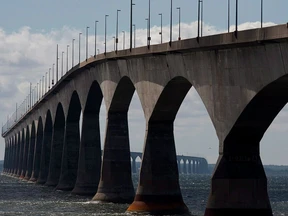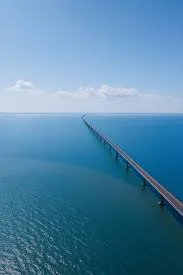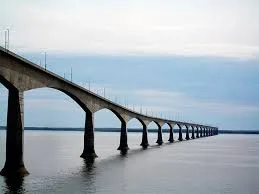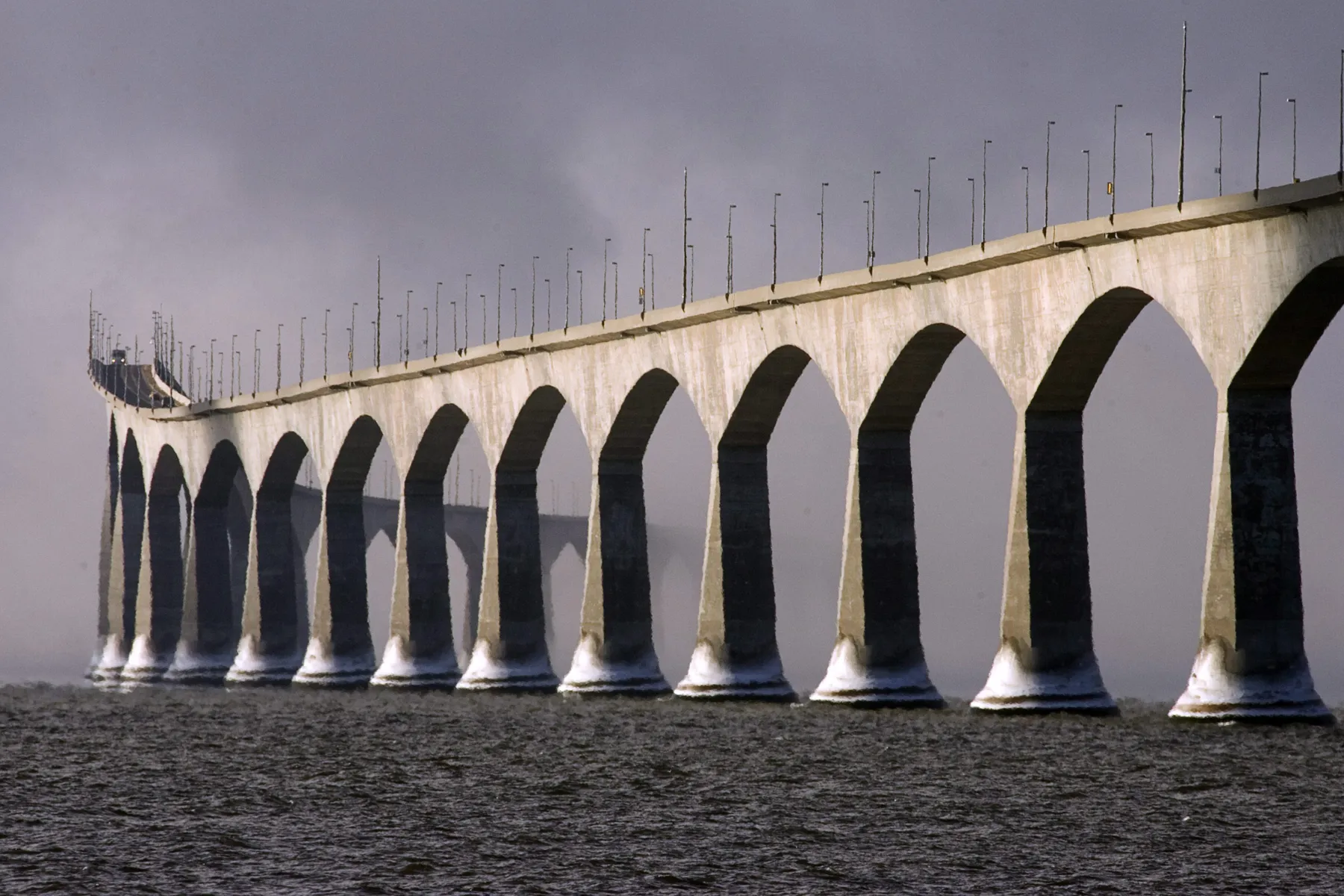Confederation Bridge: A Canadian Engineering Marvel Connecting Provinces and People
Stretching an impressive 12.9 kilometers (8 miles) across the icy waters of the Northumberland Strait, the Confederation Bridge stands as one of Canada’s most extraordinary feats of modern engineering. Linking Prince Edward Island (PEI) to New Brunswick, this towering structure has not only reshaped regional transportation but also transformed the economic and social landscape of the Atlantic provinces. Since its opening in 1997, the bridge has become both a functional necessity and a symbol of national innovation and resilience.

Designed for the Elements
Constructed to endure one of the harshest maritime climates in North America, the Confederation Bridge is the longest bridge in the world built over ice-covered waters. The region’s long, frigid winters posed a significant engineering challenge—one that required innovative design and exceptional materials.

The bridge features a gentle horizontal curve, which enhances driver visibility and allows the structure to distribute stress more evenly. Its tall concrete piers rise dramatically from the sea, each outfitted with ice shields that help break up ice sheets before they can damage the structure. This ensures the bridge remains safe and passable even in the coldest months of the year, when ice floes dominate the strait.
Built for Connectivity
Before the Confederation Bridge, travel between PEI and mainland Canada depended heavily on ferry service—a system often interrupted by weather and seasonal limitations. The bridge replaced this with a year-round, weather-resistant option that significantly reduced travel time. What was once a complicated journey is now a smooth drive that takes less than 15 minutes.

This increased accessibility has had a profound impact. Commerce has flourished, with improved movement of goods, services, and labor. PEI’s agricultural products now reach broader markets more efficiently, and businesses benefit from stronger links to mainland suppliers and customers.
Boosting Tourism and Local Growth
Perhaps most visibly, tourism has surged since the bridge opened. The ability to drive directly onto the island has encouraged more spontaneous travel and opened PEI to a wider audience of visitors from across North America. Attractions such as Cavendish Beach, Anne of Green Gables Heritage Place, and PEI’s famed red cliffs have seen steady increases in attendance, especially during the summer months.

Communities on both sides of the bridge have seen the ripple effects. New jobs, rising property values, and greater infrastructure development all point to the bridge’s lasting influence.
A Lasting Legacy
While tolls are charged for vehicles leaving PEI via the bridge, most residents and travelers see it as a worthwhile cost for the convenience, efficiency, and connectivity it provides. The Confederation Bridge isn’t just an architectural marvel—it’s a symbol of unity and progress in a country defined by vast geography and diverse regions.

More than two decades since its completion, the Confederation Bridge continues to stand strong—a living monument to Canadian determination, innovation, and the enduring power of connection.
Whether admired from afar or crossed on a coastal road trip, the Confederation Bridge remains one of Canada’s most iconic and impactful structures—a true engineering marvel bridging more than just land.





